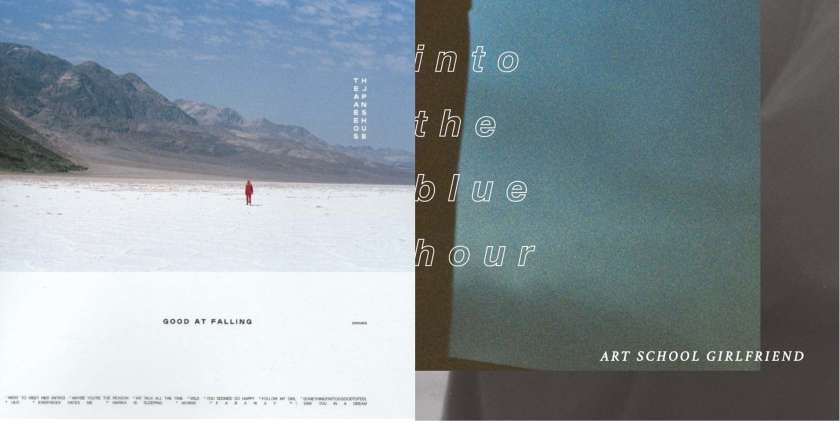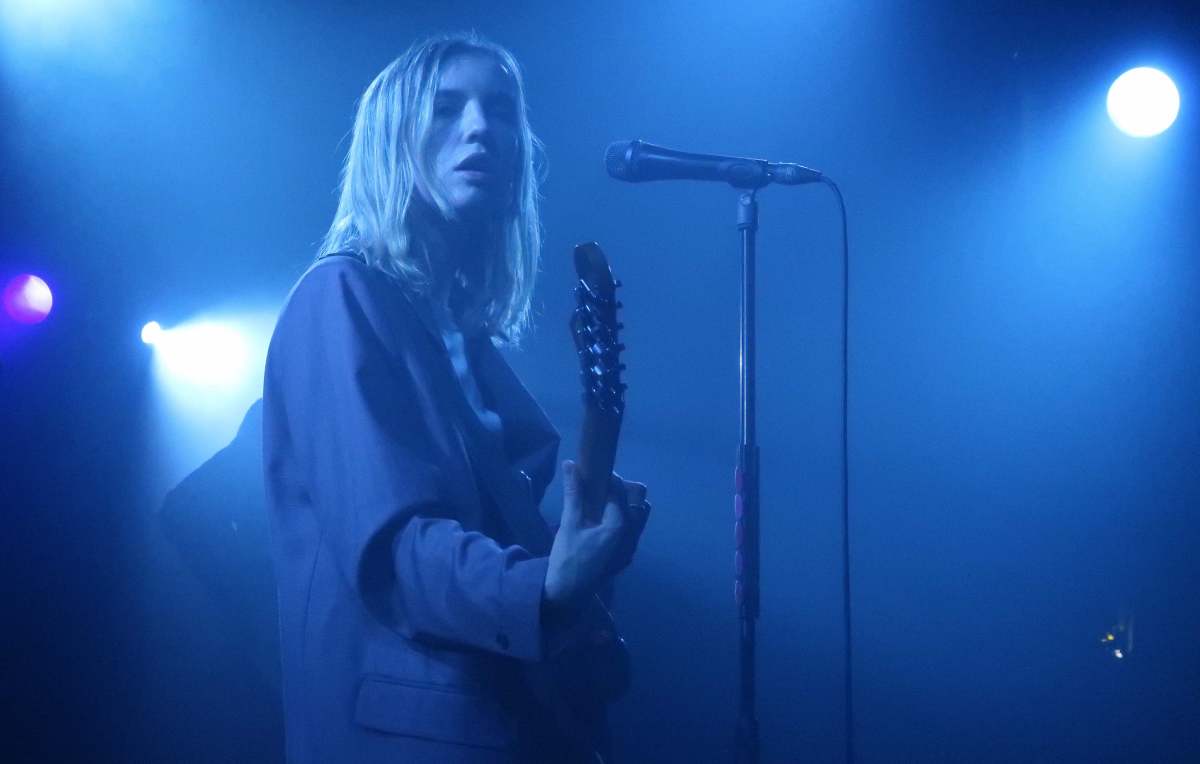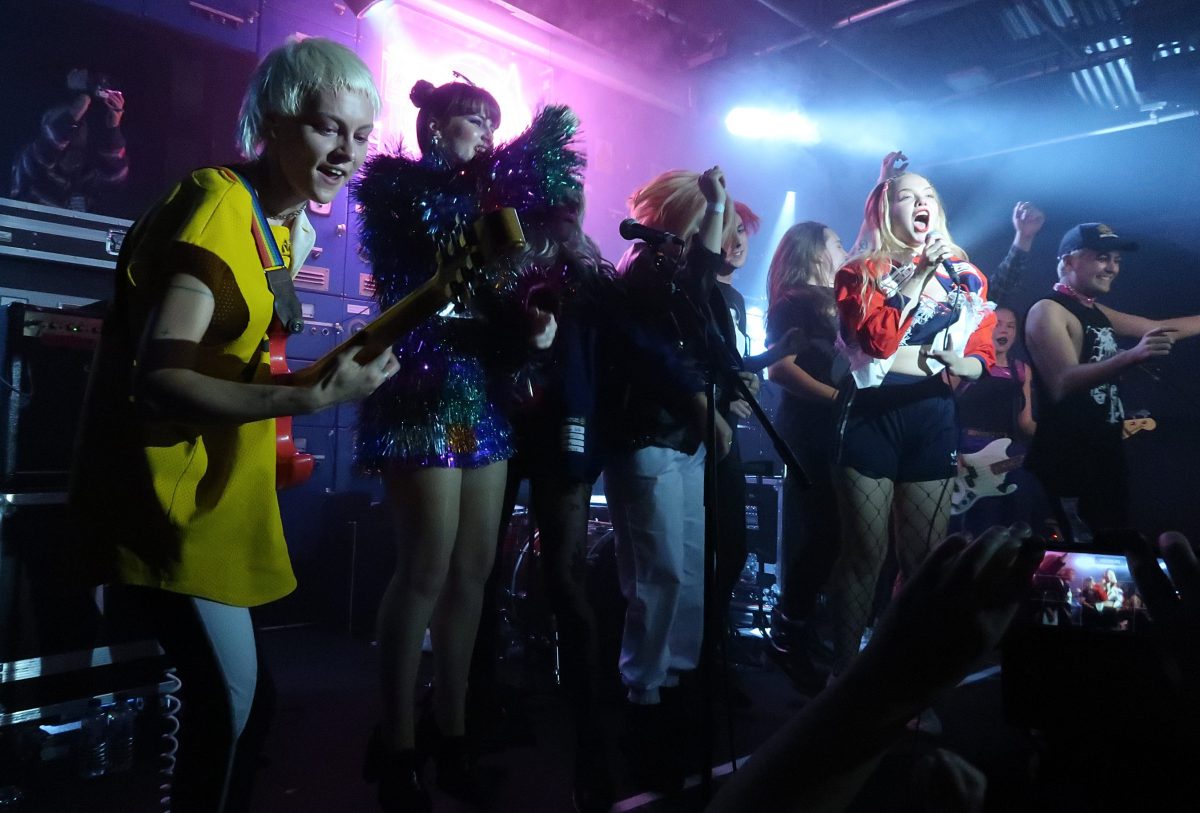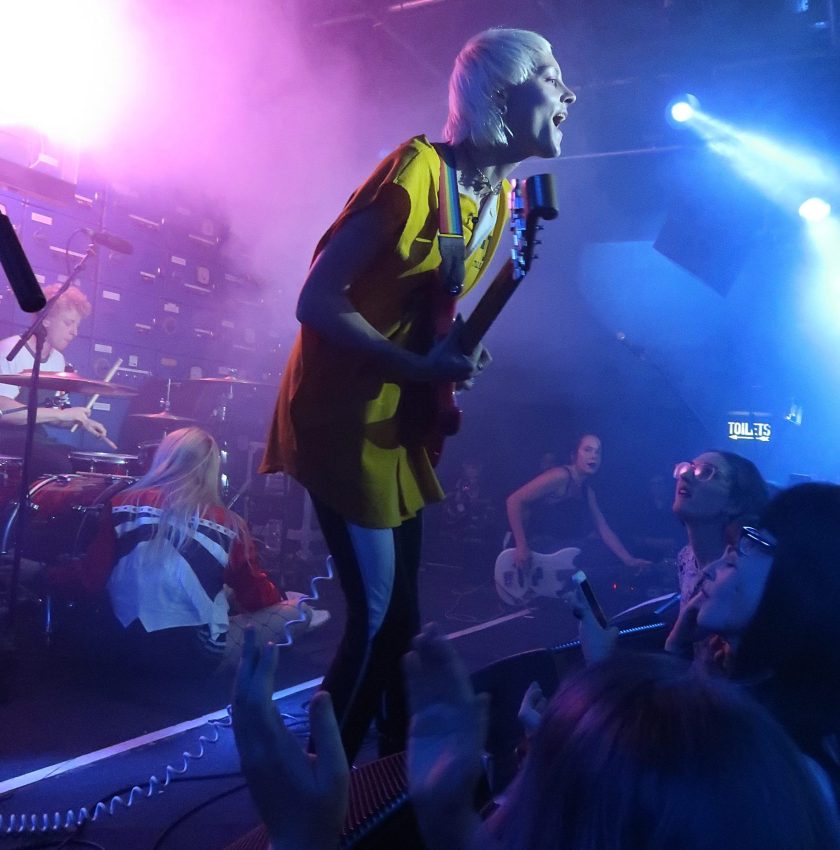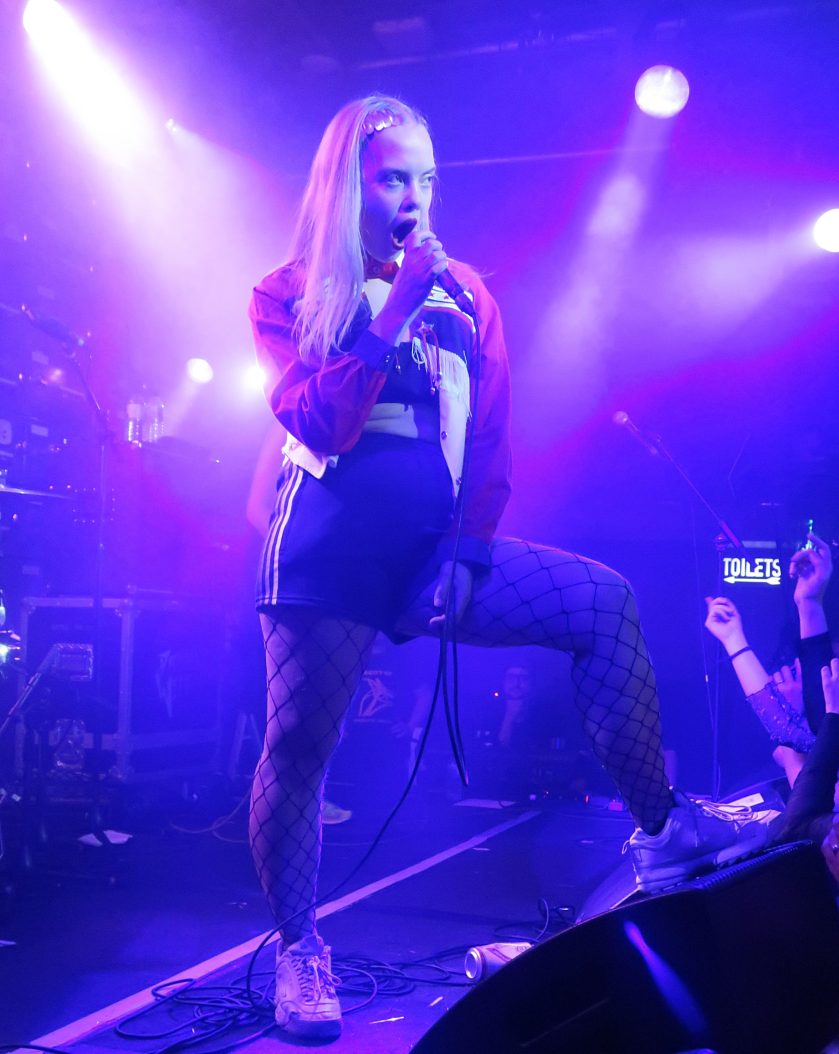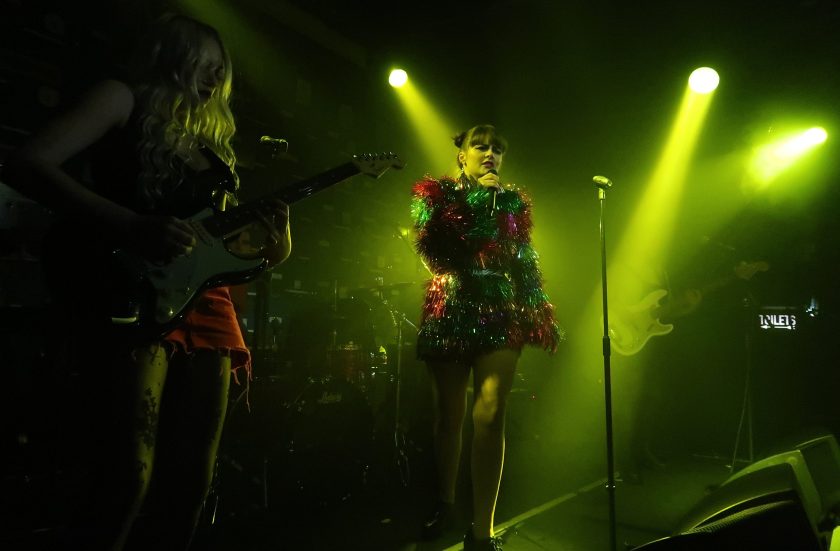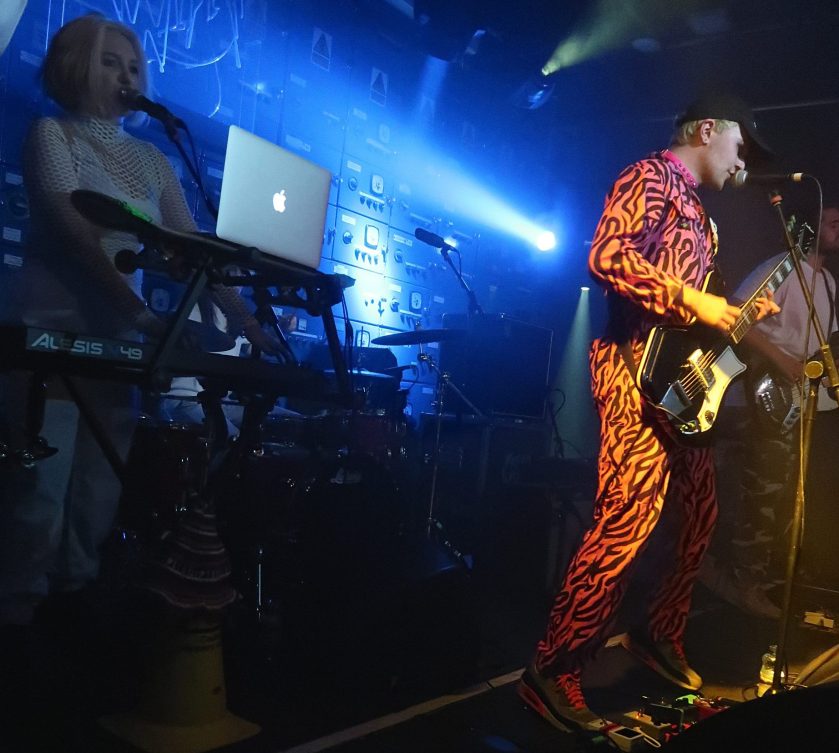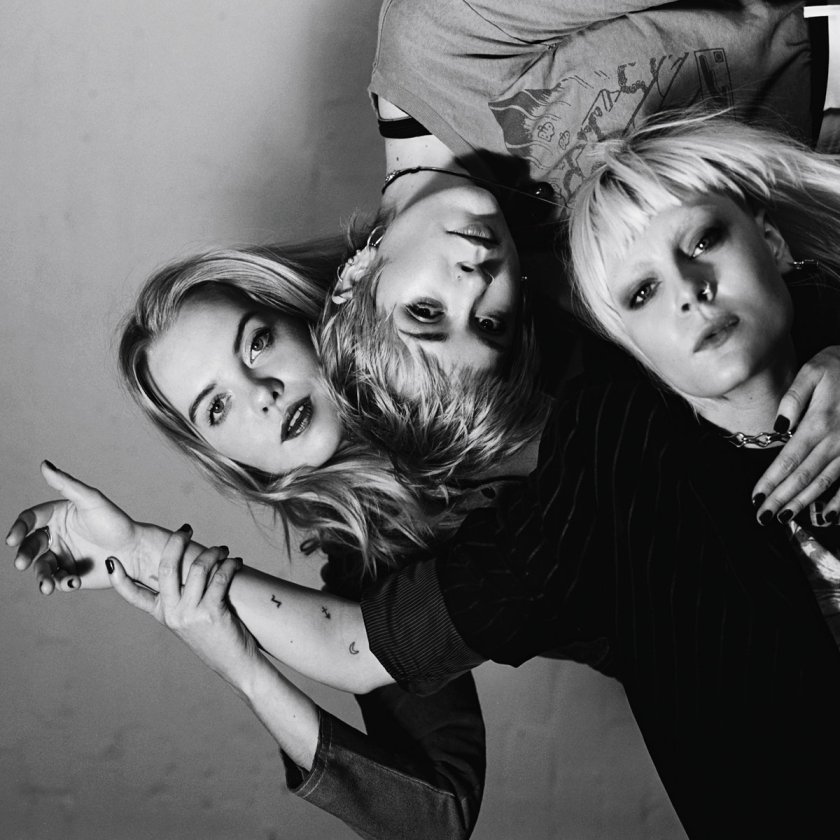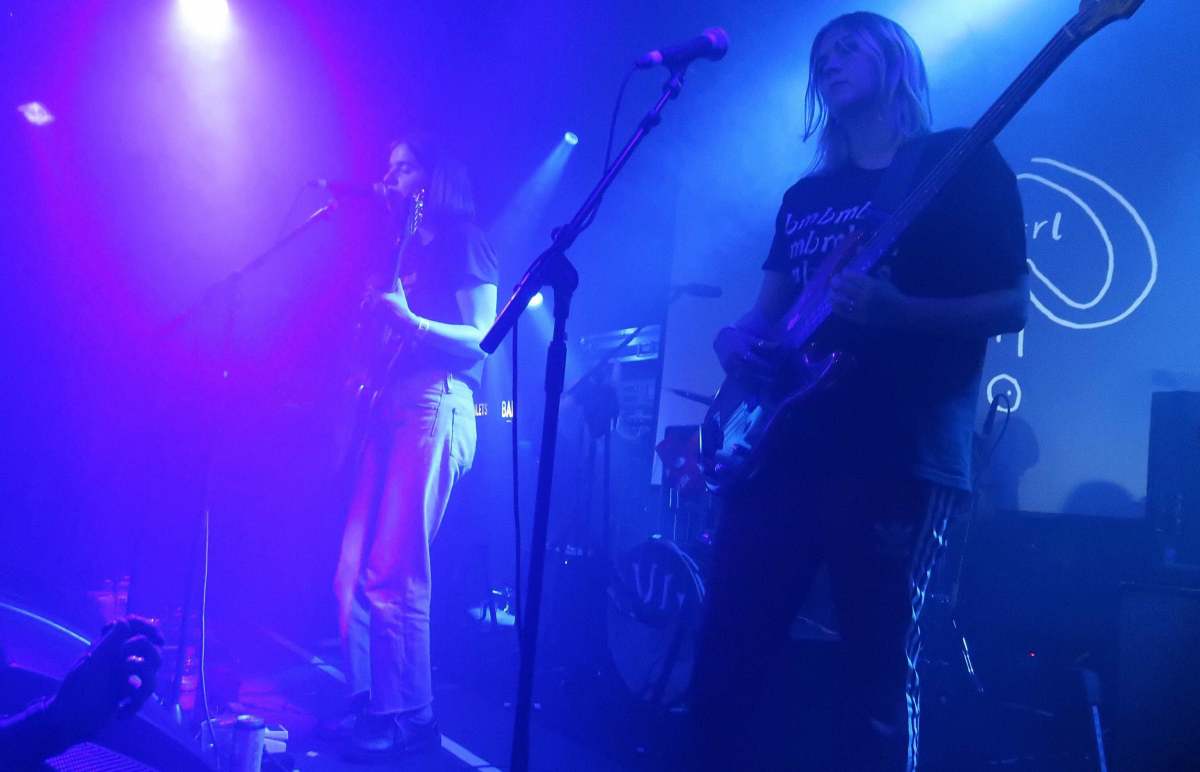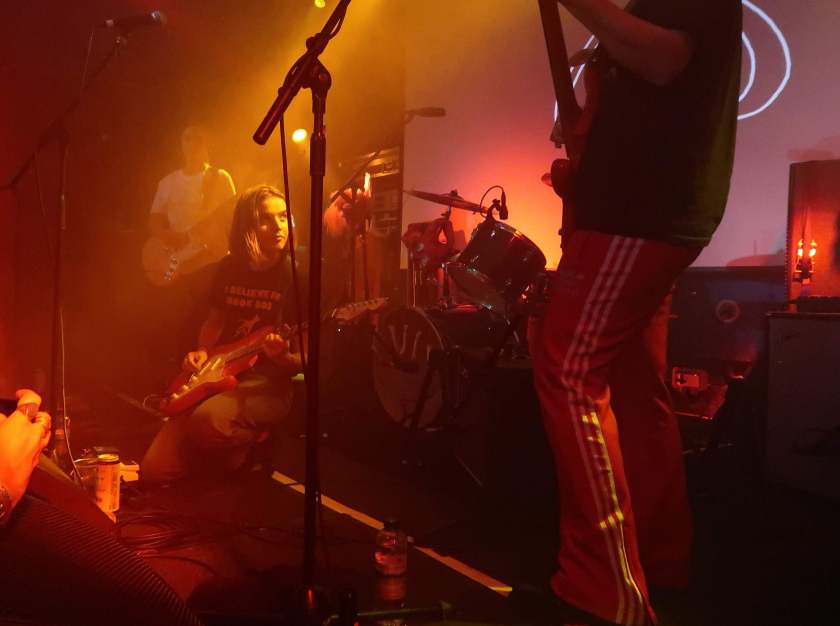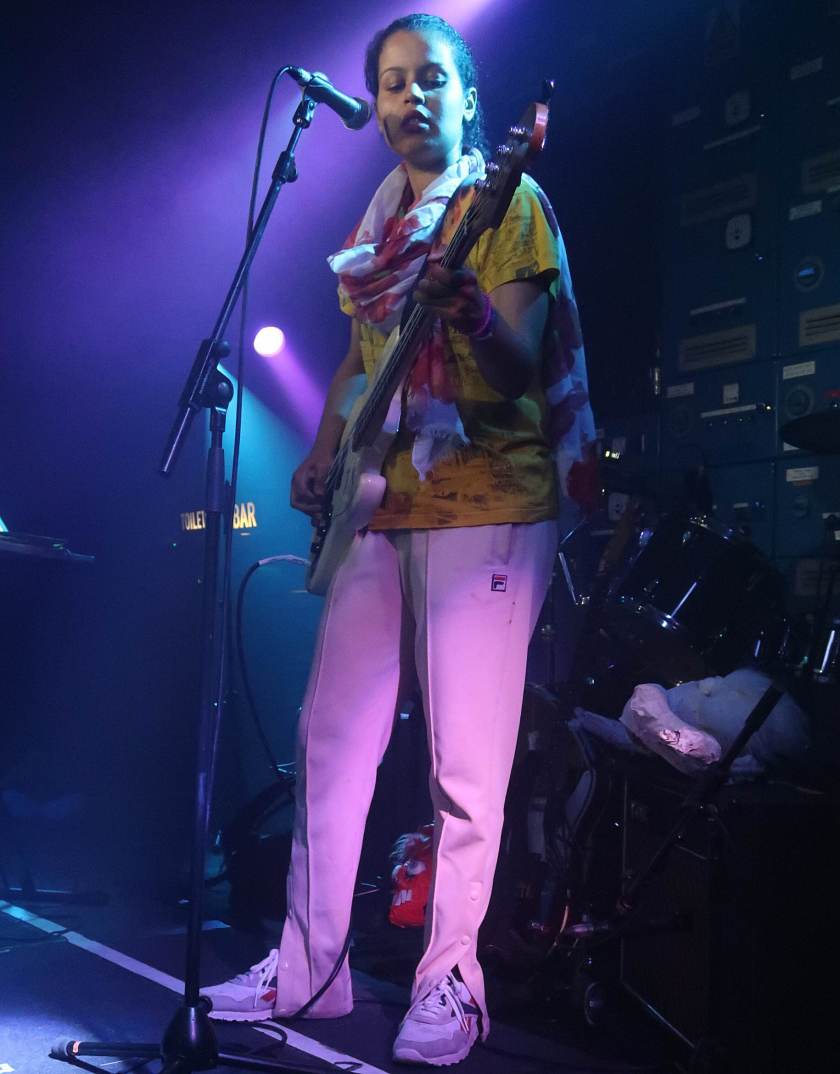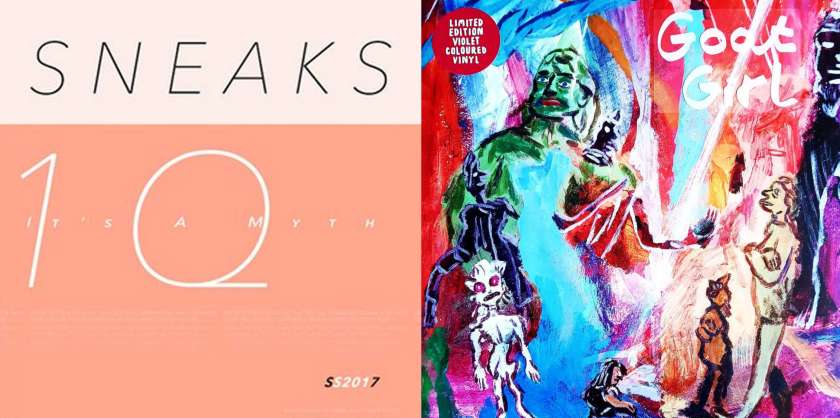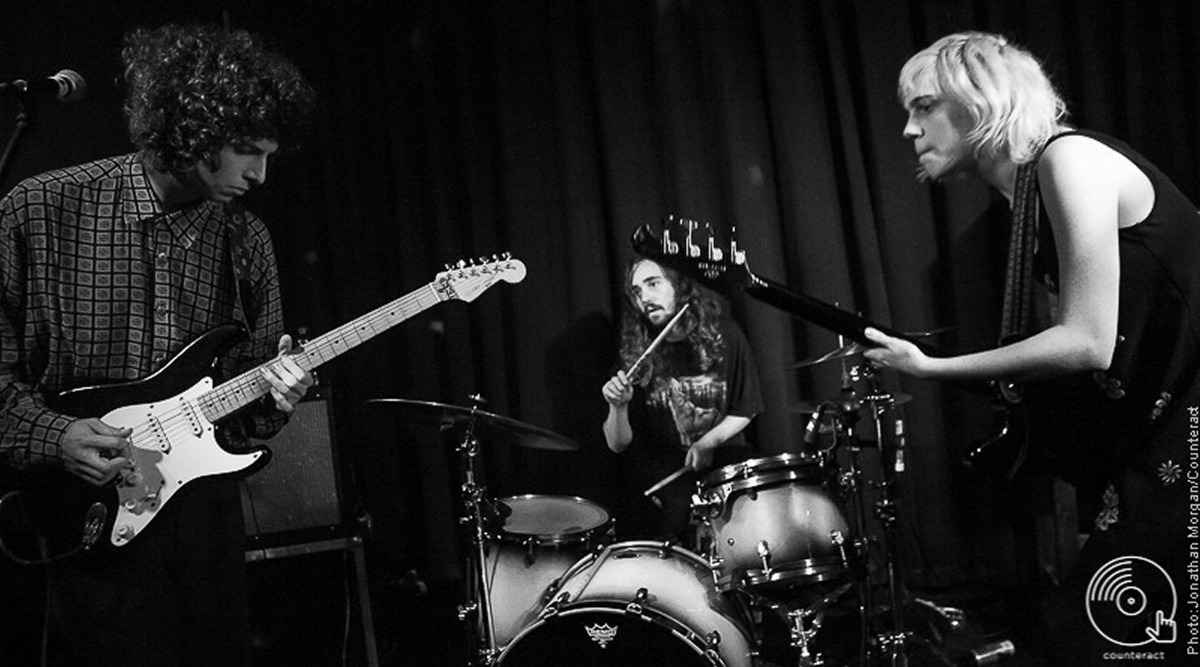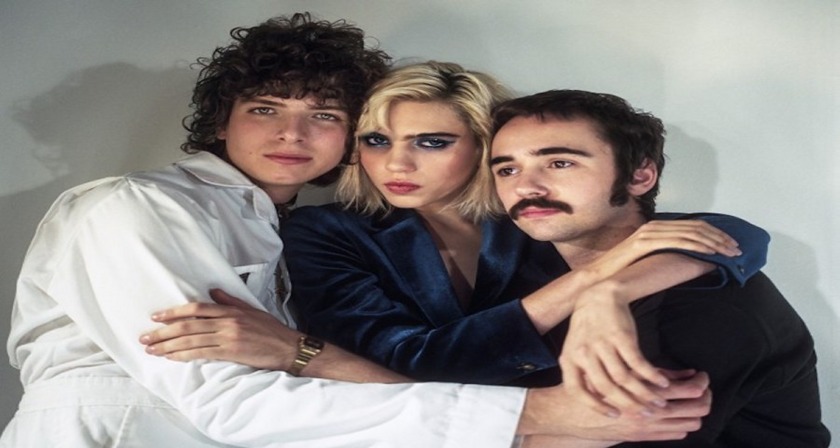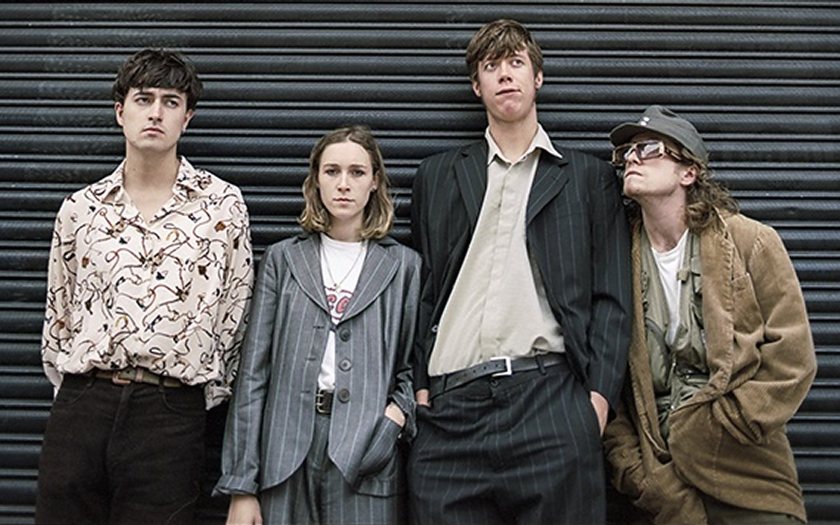In origin, ‘The Japanese House’ is the name of the solo project of songwriter Amber Bain, but they play live as a four piece band, with Bain herself taking both the principle vocal and guitar spots. Her music has always been truly original – often gentle, swaying and ethereal, but by no means simple balladeering. Playing ‘spot the genre’ with her is futile. She has described herself as “harmony-based, guitar-y, alternative pop”, but so were ‘Beach Boys’. Elsewhere, she has been described variously as ‘Ambient’, ‘New Age’, ‘Electropop’, ‘Folktronica’ and ‘Dream pop’, but none of these really quite covers it and, in reality, she is unashamedly just ‘The Japanese House’ – a wonderful one band genre in her own right.
Electronic signal processing looms large, and this is not just restricted to the instruments. Bain’s vocals are also often heavily processed. She uses effects on her voice in exactly the same way that she does on her guitar, to broaden her sonic pallet. This seems to upset some people who regard it as somehow cheating. The same people would probably be perfectly happy with the use of synths, or guitar pedals, so why on Earth they would criticise the use of similar processing with the human voice seems inexplicable. But the results can be absolutely marvellous: with chorus, harmonies, dramatic pitch changes and other effects introduced as well as more traditional tweaks like reverb and delay. We have written about these techniques and her overall output in a previous more in-depth article, so there is little point in repeating ourselves here, but it was interesting on the night to watch her seamless melding of live performance with pre-recorded backing tracks, and the skilful way she combined both with additional layers that she built up there and then on stage with a looper pedal – for example on the song ‘Cool Blue‘.
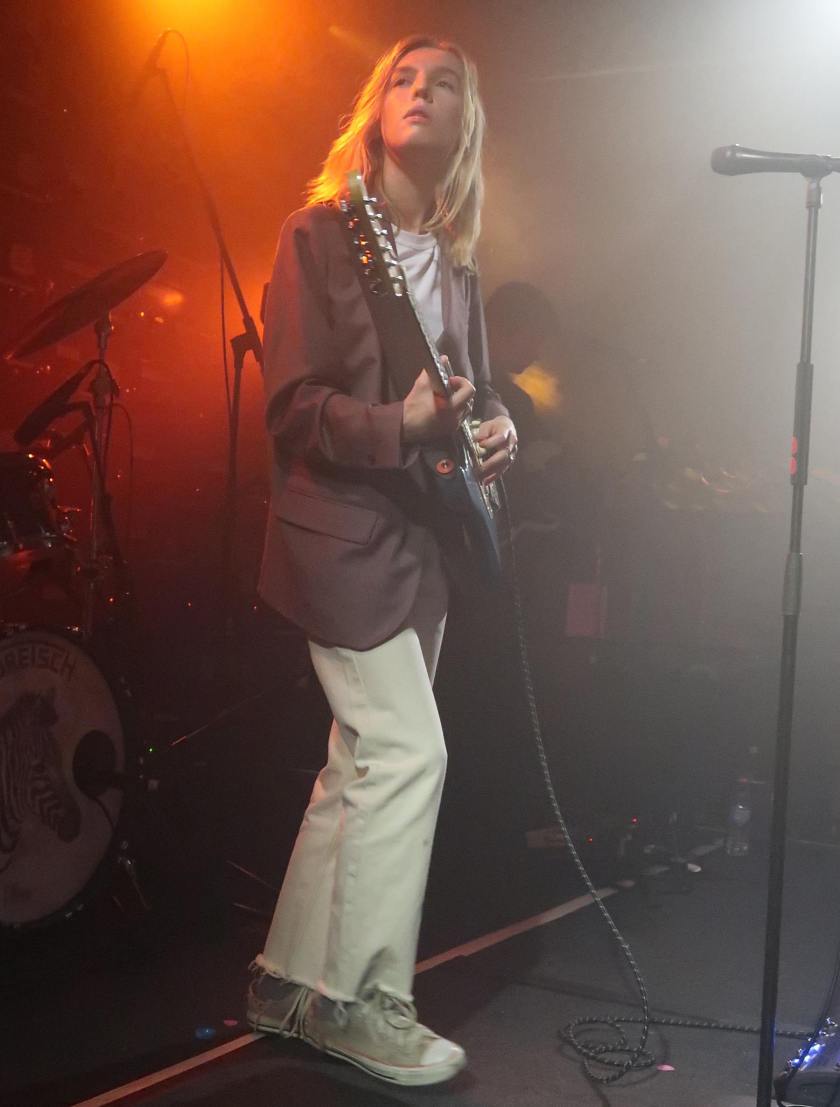
The often delicate nature of her music makes it potentially very vulnerable live to the vagaries of venue sound systems and engineering. This has been something of a hobbyhorse of ours of late, but it has to be said that the Gorilla did her proud. Both ‘The Japanese House’ and their support act ‘Art School Girlfriend’, were well mixed and relatively undistorted, so the subtleties came through well. This was the last gig of a tour and as performers they were clearly tight and well rehearsed, so it was particularly gratifying that a good performance was able to shine so well. The band itself appears to play rather differently live, being both louder and more aggressive in feel than the recorded versions of the same songs. Purist fans may disapprove, but in fact the changes are not dramatic enough to detract from the beauty of the originals. They simply add a little more in the way of bite and robustness which makes the material a lot better suited to the live environment.
There were also a number other tweaks which gave an added excitement to the music for live consumption. For example, the song ‘Face Like Thunder‘, which is anyway one of Bain’s most commercial pieces to date, has recently acquired a rather nice guitar solo live, which does not appear on the record, but was repeated at the Gorilla gig. Bain has always been an innovative guitarist, but flourishes like this show that she is also technically better than she sometimes allows herself to appear in the more tranquil recorded versions of her songs. She also has an interesting playing style, in that she is left handed, but plays a right handed Stratocaster upside down, rather than using a purpose-built left handed model. This leaves the strings in reverse order and also leaves the strap lug below, rather than above the neck, which must effect the instrument’s center of gravity fairly dramatically. None of this seems to harm her technique, though, and she is a fascinating guitarist both to watch and to listen to.
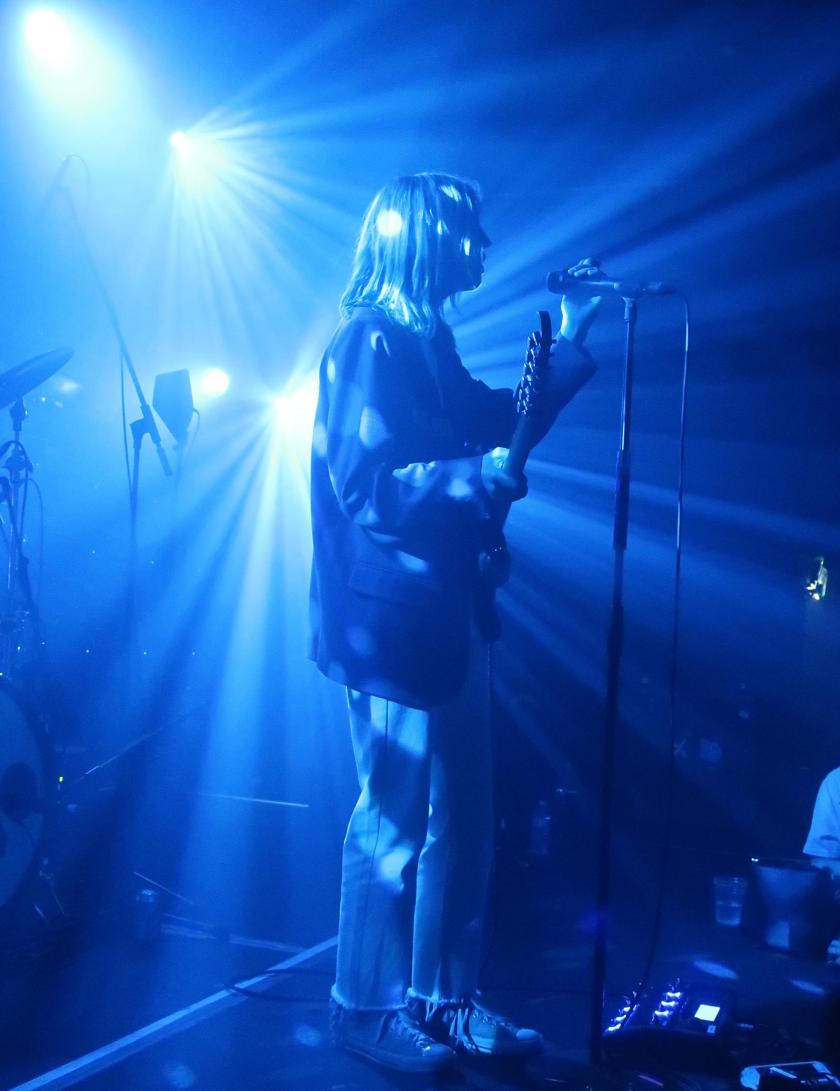
To date, ‘The Japanese House’ have released four, four song EPs, which appeared between 2015 and 2017 – a total about an hour of music. She now has a full album in the pipeline, to be called ‘Good at Falling’, which fans had been expecting this year, but which is now slated for release on 1st March 2019. The Gorilla set drew on this entire legacy, something that was much appreciated by fans who have been with her since the beginning. We got ‘Still‘ from her initial EP, ‘Pools to Bathe In’. There was the title track and ‘Cool Blue‘ from ‘Clean‘. They played the whole of 2016’s ‘Swim Against the Tide‘ EP and ‘Somebody You Found‘ from 2017’s ‘Saw You In a Dream’. The title track of that EP was also played, but not in the form we are used to. Bain let slip that there will be an acoustic version of it on the album and she played that instead, although actually on her Stratocaster, rather than an acoustic guitar. It was played solo nevertheless, which changed the whole feel of the song. In addition, she previewed four more tracks from the album. “You Seemed So Happy’, ‘Maybe You’re The Reason’, ‘Follow my Girl‘ and ‘Lilo‘.
The first two were entirely new to all of us, and not even live versions have yet managed to reach the likes of ‘YouTube’. The other two have appeared as singles, however, and the latter comes with one of the most poignant music videos ever made. Bain makes no secret of the fact that she is gay (it is perhaps worth speculating why so many of the most innovative female guitarists of the moment are), and until recently she was in a long term relationship with fellow songwriter Marika Hackman. The song is essentially a break up record, but the former couple remain on such good terms that Bain was able to persuade Hackman to film a video about their relationship to go with the song. The result is intimate and heartrendingly beautiful. It also has a few nice little witty touches, such as a bath scene which seems to refer back to one of Hackman’s own videos: 2013’s ‘Bath is Black‘. The song has clearly become well loved by fans. Its introduction got the biggest cheer of the night and although it is a fairly new release, a large part of the audience knew its lyrics well enough to sing along. Interestingly, the new material had even more of a rock feel on the night, which might suggest that the album itself will depart from her previous serene voice and follow suite. But, in fairness, the recorded versions of the two singles are as lyrical as always, so we will just have to wait until March to find out.
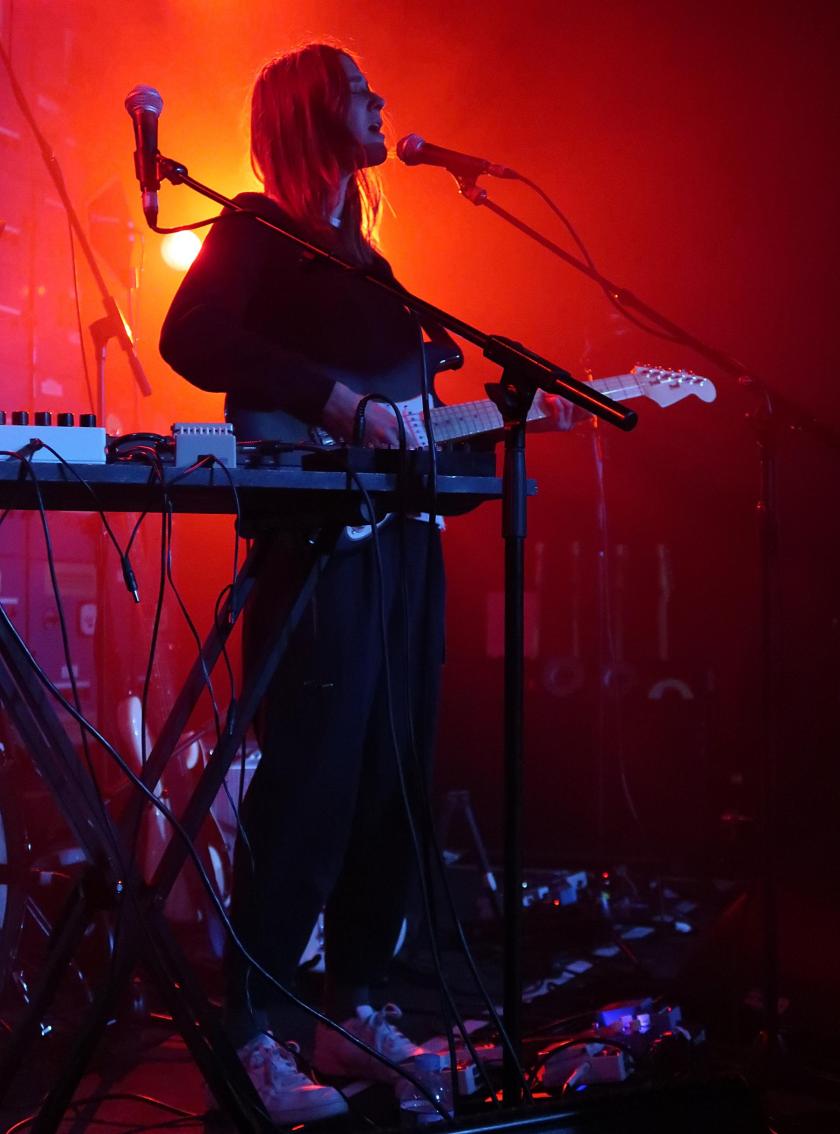
We have said it before on ‘Hera Says’, but it has long been a mystery to us why people pay good money to see a gig and then deliberately miss much of it because they could not be bothered with the support acts. Well, fair enough. It is their money and if that is what they want, then who can argue. We would, though, say that we find the support slots to be a wonderful introduction to an apparently never ending stream of astonishing new talent. For example, one of our current absolute favourites is Manchester band ‘URF‘ who are quite astonishingly good and who we first saw playing to a virtually empty room supporting ‘Estrons’, before the latter’s audience had turned up.
‘The Japanese House’ introduced us to another wonderful talent: ‘Art School Girlfriend’, aka ex ‘Deaf Club’ member Polly Mackey. On the night she was playing as a solo artist, although she also appears with a full band on occasions. This was an inspired pairing and she was a perfect match for ‘The Japanese House’, being another exponent of gentle and lyrical electronic influenced music. She herself describes her material as ‘slow and electronic with overtones of longing and undertones of gay.’ which is at least as accurate a description as any we could manage. She did, though, miss out one crucial word: ‘beautiful’. Her music really is exquisitely beautiful. Mackey has a distinctively yearning, but pure toned, voice and when playing solo, she sings to a mix of effects, drum machine patterns and her own guitar. She plays a Strat, like Bain, and sometimes has an almost Hank Marvin like reverb rich sound. She also plays bass on other tracks. It is a pity that neither act appeared on the merch stall afterwards, because we would have loved to talk to her, but she has two EPs available: 2017’s ‘Measures‘ and the newly released ‘Into the Blue Hour‘. We can heartily recommend, both and the former is even available on vinyl.
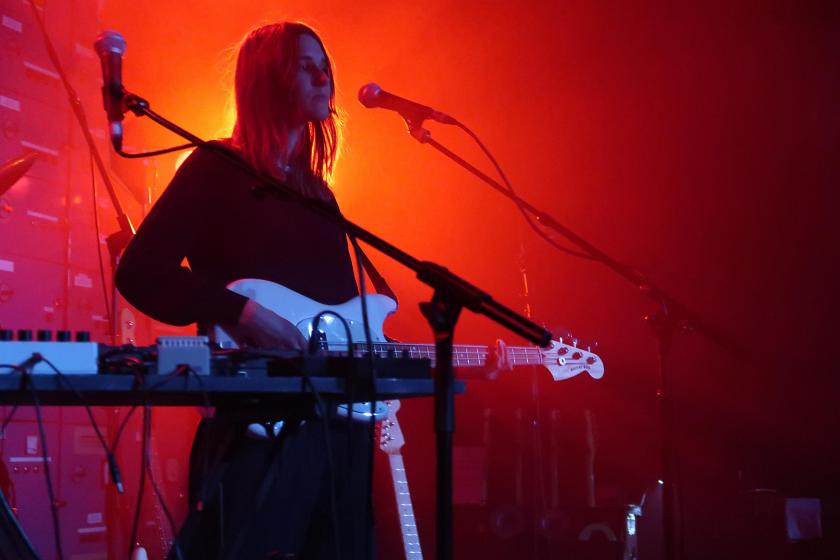
Finally, it is always worth taking a look at the audience at a gig. Indie music can all too often these days be the preserve of a largely middle aged, white, male crowd, who are increasingly older, often markedly so, than the bands they go to see. It is worth saying, though, that a ‘Japanese House’ audience is very different. The average age was dramatically lower than is often the case. There was a slight but definite female majority and a broader racial spread, especially amongst the women. As one might expect for two LGBTQ acts, there was a substantial number of same sex, again largely female, couples. Above all, though, there were a lot of people who looked to be of Japanese (or its environs) origin. The Japanese House name actually derives from a holiday home in Devon where Bain once stayed as a child, rather than from anything actually Japanese, but she has clearly won over devoted far eastern fans. In short, this was a lovely evening with two great acts playing at the top of their game.
Hera Says.
‘Hera Says’ also has a Facebook page at: https://www.facebook.com/hera.saysso.3
